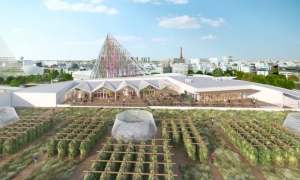People have been cultivating food in their own gardens and land for a very long time. Urban farming is seeing growth as climate concerns grow and cities around the world seek to be more sustainable. Urban farming can be more sustainable than traditional farms in many ways while also making cities more resilient and self-sufficient. A new age of farming is on the horizon in the United States.
The United States Homestead Act of 1862 drew Americans west. The act promised 160 acres of land to anyone who spent 5 years on a piece of land, built a 12-by-14 foot dwelling, and grew crops. This new law brought forth a new age in the United States of self- sufficiency and living off the land. At the time over 90% of Americans lived in rural areas. Over the next century and a half, people began to migrate towards cities for various economic reasons. During this shift, some of our self-sufficient social values transferred to urban life bringing some agriculture to urban areas. Agriculture remained in urban areas into the early 1900’s but over time it slowly became an almost entirely rural industry. Industrial facilities slowly replaced agriculture in the city.
The 1970’s ushered in a new era of urban agriculture with the replacement of factory buildings with community gardens. Although community gardens had existed long before the 1970’s, a new occurrence began to take place in cities. Urban factories began to move to the south for cheaper land and labor. Outsourcing factories to other countries became a reality for many as well. During this time, many factory buildings were set fire out of desperation by building owners in insurance fraud schemes. In vacant lots in cities like Detroit and Philadelphia, people began community gardens. Residents began to grow their own fruits and vegetables, and the community garden became a meeting place and a local hangout. The trend has continued until today, where community gardens are available in nearly every city across the country.
In recent years, vertical farming has begun to take shape in major cities. Urban farming is gaining steam in the business world, where large scale agriculture operations are inevitable in major cities like San Francisco and New York. These urban farms have the ability to grow a large portion of the produce consumed in cities. The world’s largest urban farm is set to open in Paris next year, producing 1,000kg of fruits and vegetables each during the growing season, located on a rooftop in the heart of the capital city.

A host of environmental and economic benefits come with growing food near where it will be consumed. Local produce means transportation costs are dramatically reduced. This is good for the environment and farmers pocketbooks. Indoor farming gives farmers more control. Farmers can control exactly how much water each plant gets and cycles any excess water for re-use. In addition, no pesticides are necessary in a tightly controlled environment.
Growing more food in urban area’s makes them more resilient. Vertical indoor farms can produce high yields. Most large cities only have enough food to last a few days. Growing more food in cities allows a more diverse, and less vulnerable system that can handle changes easier. Shelf life is also longer when food travels small distances to where it will be consumed. This can reduce food waste in urban areas and also reduce costs further.
Urban farming offers cities a way to be self-sustaining once again. Produce grown in the city can be eaten in the city, in a way that’s smarter than our current system. Cities should to encourage community gardens and urban farming operations. This can be built into sustainability plans for cities across the country.

